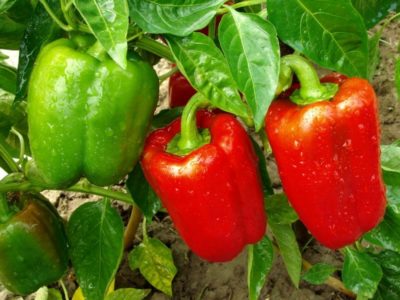 Tomatoes often take the cake as being the easiest vegetables to grow, but some gardeners have found certain types of pepper plants are even easier. Green, yellow, red and even purple peppers can add tons of color, variety and spice to your garden and kitchen, and you can grow a huge assortment of pepper plants with just a little planning and time.
Tomatoes often take the cake as being the easiest vegetables to grow, but some gardeners have found certain types of pepper plants are even easier. Green, yellow, red and even purple peppers can add tons of color, variety and spice to your garden and kitchen, and you can grow a huge assortment of pepper plants with just a little planning and time.
Unlike tomatoes, pepper plants aren’t vining, sprawling masses that can get wildly out of control. Pepper plants usually grow neatly with only a few limbs, and can easily be trained to grow straight up. Pepper plants thrive in hot, sunny conditions and most varieties do well with a constantly moist soil, but avoid standing water. Another great thing about peppers is that insects typically avoid them, and most easy and common pepper varieties are resistant to disease. However, inspect your plants every few days to ensure something isn’t creeping in on your precious crops!
Getting Started With Peppers
Like tomatoes and many other vegetables, peppers grow best when started indoors a month or so before you plan on planting outside. This will give you the chance to control all the variables to give you the best pepper plants possible. Also, you’ll be able to grow peppers that you wouldn’t normally find at a garden center or nursery. We won’t go into a full description of how to start seeds indoors, as you can find that information in other places on our site. Once you have seedlings and sprouts begin popping up, remove the weakest-looking ones to prevent competition. About two weeks before planting time, begin hardening off your sprouts by putting them outside for an hour a day, during warm, sunny days. After five days of this, begin increasing their time outdoors gradually until planting time.
New Natural Fertilizer Doubles Garden Production!
Of course, if you’re not interested in turning your home into a temporary greenhouse, you can purchase pepper plants already started for you at a garden center.
As you can imagine, pepper plants love full sun, so make sure you plant in an area of your garden that won’t get shady. Plant your peppers about 12 – 16 inches apart. Once planted, place a cage around the plants or stake them for protection and to encourage manageable limbs and foliage.
Pruning
In the first few weeks of planting, pinch off a few stems every few weeks to encourage your pepper plant to become bushier. Shoots will appear where you removed the stems. Do this every few weeks in the early growing season. After a few weeks, your pepper plant should have white flower blooms. As hard as this may be, pinch off the early blooms to encourage more numerous and larger peppers to form later in the growing season. Doing this allows the pepper plant to concentrate on establishing a better root system. After you’ve removed these early blooms, you can stop.
If you have a few pepper plants, experiment with this technique and only pinch off the early blooms on half the plants and not the others. Then, compare to see which ones produce the best peppers.
Story continues below video
Bell peppers
Bell peppers are probably the most versatile and usable of all peppers, as their taste is quite mild and sweet. They are also extremely easy to grow and maintain, and don’t require any special care rules that most other plants don’t follow. Many pepper gardeners have found that their pepper plants thrive with moist soil, so try to water about 1½ to 2 inches a week. To measure how much you’re watering, place a small container (some recommend an empty tuna can) near the area you’re watering. Measure the amount in the container to gauge how much you’ve watered.
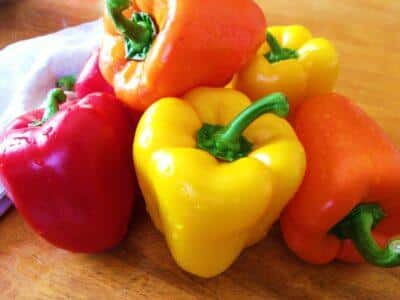
Image source: Sweetgraces
Once your first peppers start to form, fertilize again (assuming you did when you first started your garden). Bell peppers like phosphorus, magnesium and calcium, so use an organic fertilizer such as Protogrow® to provide these nutrients. A mix of Epsom salt and water is also a great fertilizer for most plants.
Bell peppers are unique in that the more mature the pepper gets, the sweeter the flavor, giving you full control over what you want. As the pepper gets older, it will go from green to red, yellow, or orange. It may take up to 100 days before a pepper turns red, so have patience! Once you’re ready to pick a bell pepper, use scissors or pruners to clip it from its stem so you avoid damaging the plant.
Banana Peppers
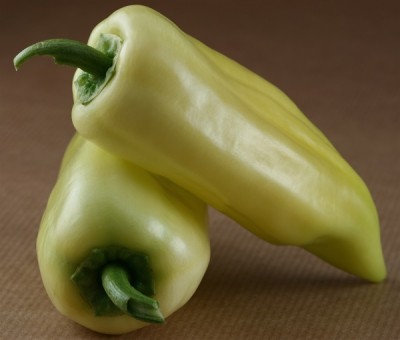
Image source: Jalapeno peppers
Banana peppers, also called yellow wax peppers, are grown in quite the same way as bell peppers. They come in many varieties, ranging from hot to sweet. The hot ones can get as hot as a habanero, so watch out!
Like bell peppers, banana peppers require 1½ to 2 inches of water a week and full sunlight. They also appreciate a fertilizer rich in phosphorus, magnesium and calcium. Avoid using too much nitrogen, as this can cause large plants with little blooms or produce. For those inexperienced with fertilizer, try a 5-10-10 solution (the numbers being the amount of nitrogen, phosphorus, and potassium).
Banana peppers will turn from green, to yellow, to red, with most considering yellow being the optimal time to harvest. Remember: a sweet pepper will get sweeter as it matures, while a hot pepper gets hotter.
Jalapeno Peppers
Jalapenos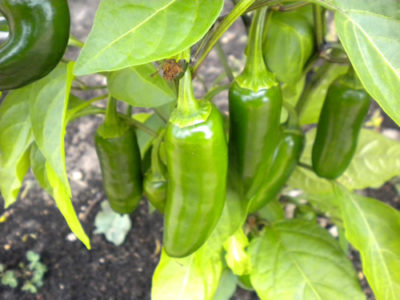 have a very long growing time, ranging from 90 to 120 days or longer, meaning you’ll need to start these indoors or buy already established plants. Like the other pepper plants, jalapenos are no different and require full sun and 1½ to 2 inches of water a week, keeping the soil moist on most days. Use a high nitrogen, low phosphorous fertilizer when the plant is in its vegetative stage and a low nitrogen, high phosphorous when the plant is blooming. Jalapenos turn from green to red with maturity, but are usually picked when dark green. Waiting until they’re red will give you hotter jalapenos, but you also run the risk of them falling off the plant.
have a very long growing time, ranging from 90 to 120 days or longer, meaning you’ll need to start these indoors or buy already established plants. Like the other pepper plants, jalapenos are no different and require full sun and 1½ to 2 inches of water a week, keeping the soil moist on most days. Use a high nitrogen, low phosphorous fertilizer when the plant is in its vegetative stage and a low nitrogen, high phosphorous when the plant is blooming. Jalapenos turn from green to red with maturity, but are usually picked when dark green. Waiting until they’re red will give you hotter jalapenos, but you also run the risk of them falling off the plant.
After harvesting, don’t touch your eyes or anyone else, and wash your hands immediately!
Ghost Peppers
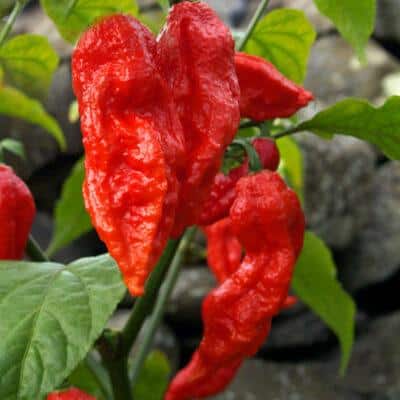
Image source: loghouseplants
Looking for a challenge? Try your hand at growing the Bhut Jolokia, commonly known as the “ghost pepper.” The ghost pepper is the second hottest pepper in the world, with a rating of 1,041,427 on the Scoville scale. By comparison, Tabasco sauce rates at 2,500–5,000, and jalapeno rates at around 2,000. That’s some serious heat!
Growing ghost peppers has become a challenge and a hobby for pepper growers all over the world since its discovery in the mountains of India. Because ghost peppers like hot conditions and take over 150 days to fruit, starting indoors is a necessity. Follow the processes listed for the previous pepper plants and take care to keep the soil moist, but no standing water. Some gardeners have found that planting flowers near the ghost pepper plant helps attract bees to encourage pollination. The Chili Pepper Institute considers the ghost pepper to be extremely hard to grow, so good luck!
Sign up for Off The Grid News’ weekly email and stay informed about the issues important to you
 Off The Grid News Better Ideas For Off The Grid Living
Off The Grid News Better Ideas For Off The Grid Living




